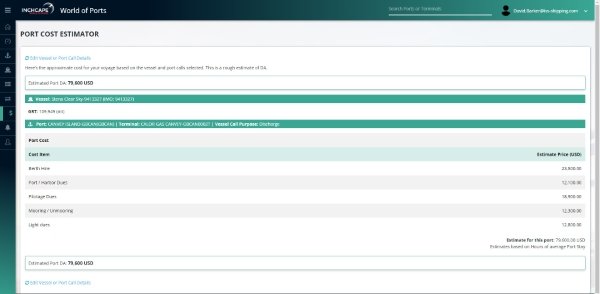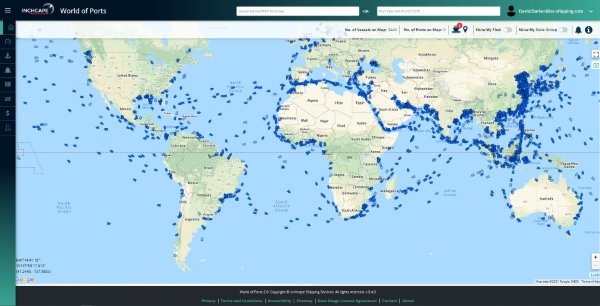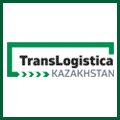hcape is adding a super-useful Port Cost Estimator (PCE) to its World of Ports 2.0 platform that will make both voyage cost calculations and TCE estimates much easier and more accurate.
 Captain Aravind Prasath, Head of Systems Design at Inchcape
Captain Aravind Prasath, Head of Systems Design at Inchcape
Anyone involved in voyage planning will love this clever new module in World of Ports 2.0. It has been created by Head of Systems at Inchcape, Captain Aravind Prasath, and his team. Tech whizz Prasath was a vessel master for 10 years before joining Inchcape so is very familiar with the "unknown variables" that can knock port-cost calculations out of whack.
The port costs challenge
Where you load and discharge makes up a big chunk of the total cost of a voyage. A major challenge is to estimate the cost both ways. To go ahead with a charter, you need insight into every required financial transaction to avoid making a loss. PCE provides cost estimates based on port operations ranging from loading and discharging to bunkering and canal transits, and across different vessel types and sizes.
Marshalling the variables
Many variables can influence the cost of a port call, including the port itself, the terminal, type and size of vessel, type and quantity of cargo, whether it is loading or discharging, and a wide range of optional and mandatory in-port services. By selecting your vessel and load/discharge port, PCE can give you an average baseline cost (the bare minimum) in three clicks. It automatically fills in vessel details from its database. But the more fields you populate (specific terminal and type of cargo and quantity), the closer the estimate will be.
Exceptional granularity
To get a realistic prediction PCE matches users' requests based on actual calls and PDAs (proforma disbursement accounts). It digs down among more than 3.5 million datapoints in Inchcape's proprietary historical port dataset stemming directly from Inchcape's global network. Not only has Inchcape administered millions of port calls over the years, they track calls being made by 50,000 vessels each and every day. This means the dataset is dynamic and being added to all the time.
The laytime question
Voyage distance and bunker costs can be calculated pretty easily but the key issue is laytime. Especially with big cargoes, it's impossible to know exactly how long you will be in port. The time can vary between ports and on the nature of the cargo. This information is crucial to calculate a reasonably accurate voyage cost.
You can add an approximate turnaround time to the voyage cost but how much is the port cost by itself? What exactly will a port charge for, for example, a five-day stop if that's what it takes? This can't be automated; you need to have local port sources feeding in the right data. This Inchcape can do because of its strong local presence; it is Inchcape's unique ability as an agency that very few can match.
Combat time delays
Port costs can be responsible for a big margin of error in what is a low-margin business, so you really need to get a clear idea of the numbers. Let's say you've done the basic sums to get the fuel and running costs for a voyage. This would normally involve contacting agents at the ports and asking them for a PDA, which is a tedious and time-consuming exercise.
If the agent is slow, the time delay means you risk losing the business. This can be exacerbated by time-zone differences. It's an unknown factor that can't be automated. Again, Inchcape's global network can fill in the gaps.
Request a PDA and appoint the agent
The next release of PCE will include the option to download an estimate and request a PDA from Inchcape. Through our own offices or our business partners we cover 85% of the world's ports, so you are in good hands. Another great feature is that you can print out estimates in PDF format for later reference.
Derive total voyage costs
Instead of just A to B, you can also calculate total voyage costs by adding ports in PCE to get an entire voyage overview. This can help you identify a different port that may be cheaper, or you may want get a closer estimate for example for a one-off drydock visit. For even closer TCE estimates, you can also combine PCE estimates with port congestion and turnaround info from the Port Data module in WOP (see below).
Third-party services
PCE also details costs for third-party services including but not limited to fresh water provision, sludge disposal, garbage collection and launch services available for over 1,000 ports. Costs are standardized based on the total amount of services provided during ports stay at a given exchange rate. Armed with the unit cost for such services outside port costs, you may decide call somewhere with more attractive pricing.
Transparency was never better
PCE also details port rebates and exemptions where applicable for more than 1,300 ports worldwide. Rebates can be linked to frequency of calls of similar duration, for example under CoAs. Pilotage and green rebates can also influence charter rates and are similarly included.
Easy integration

PCE display is clean and easy to use
World of Ports can integrate the PCE into any system through rest API, so you can have the info you need at your fingertips. It's very simple; we send a link with an ID and password, and your system will fetch the data from our database and display on your interface. And away you go.
Enhanced competition benchmarking

Sample of the new vessel traffic display in World of Ports
Other neat changes to WoP include a more dynamic display of vessel traffic which you can filter according to vessel type and trade. The MyFleet function also lets you easily create your own fleet in just a few clicks. You can also remove the white noise to show either only your own fleet and/or your competitors' vessels.
You can also create your own 'zone group' or groups which you can filter down to specific vessel types. This immediately shows what competing ships are in that zone and where they're heading. It will also tell you how many vessels are going to be free for charter in a certain location. This is a great negotiating tool for charterers – knowing how many open vessels there are means you can push for better rates.
Optimal WOP benchmarking
PCE complements World of Ports' existing Port Data module and will soon be followed by a Port Performance module, as well as Market Intelligence. Port Performance will feature data on turnaround times based on vessel type and commodity, and port congestion in near real time. Market Intelligence will provide insight into commodity flow(s) at the global level. These modules will together help the marine assurance and operations community to plan and benchmark voyages in ways that were unthinkable just a few years ago.
Source Blue-C Press Office




.jpg)






